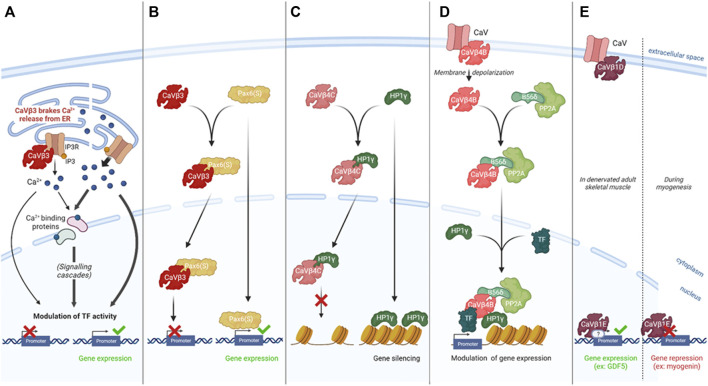FIGURE 1.
CaV-independent CaVβs functions in regulating gene expression.(A). CaVβ3 interacts with IP3R to desensitize cells to low IP3 concentration and brake Ca2+ release, consequently interfering with the Ca2+-related modulation of gene expression and affecting glucose-triggered insulin secretion in β-pancreatic cells (Becker, et al 2021) and fibroblasts mobility (Belkacemi et al., 2018). (B). CaVβ3 translocates to the nucleus with Pax6(S), preventing its transcriptional activity (demonstrated in a reporter assay in vitro in HEK 293T cells) (Zhang et al. 2010). (C). CaVβ4C translocates to the nucleus with HP1γ, a factor known to silence the transcription of several genes by modulating heterochromatin conformation. CaVβ4C interaction with HP1γ prevents its gene silencing activity in mammalian cells (Hibino et al. 2003, Xu et al. 2011). (D). CaVβ4B acts as an organizing platform for transcription-modulating factors including PP2A, HP1γ and the transcription factor TRα. CaVβ4B stabilizes this protein complex, allowing its modulatory activity on gene expression in hippocampal neurons in culture (Tadmouri et al. 2012). (E). CaVβ1E acts directly or not on DNA regulatory sequences to modulate gene expression and influence myogenesis or skeletal muscle mass homeostasis after denervation (Taylor et al. 2014, Traoré et al. 2019).

